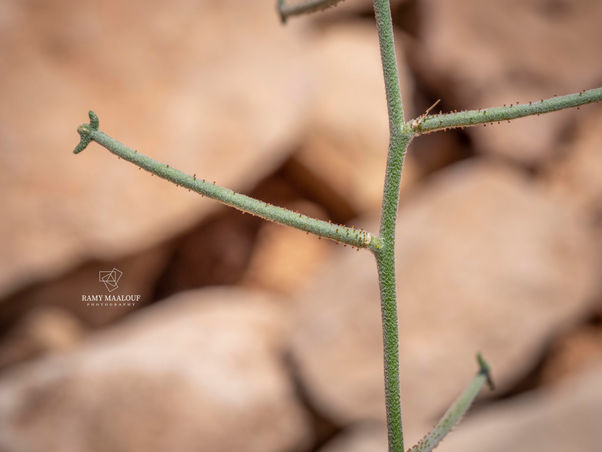Family |
Brassicaceae
Matthiola fruticulosa
(L.) Maire
Matthiola fruticulosa (L.) Maire
(First published in É. Jahandiez & al., Cat. Pl. Maroc 2: 311; 1932. Treated in Nouvelle Flore du Liban et de la Syrie, vol. 2, p. 173, Pl. LXIII nº 6; 1970)
• Life-form & habit: Perennial or suffruticose herb, 10 – 60 cm, somewhat woody at the base; indumentum variable, from sparse to densely tomentose.
• Leaves: Linear to oblong, entire to sinuately pinnatifid, often rough with pubescence.
• Inflorescence & flowers: Racemes elongating in fruit. Pedicels c. 3 mm. Sepals 6 – 14 mm, tomentose. Petals 12 – 28 mm, yellow to purplish-red, highly variable in colour.
• Fruit: Silique 2 – 12 cm, cylindrical, often torulose, pubescent or nearly glabrous. Stigma bilobed, sometimes with lateral appendages up to 3 mm.
• Phenology: Spring flowering.
• Habitat & elevation: Dry habitats, rocky and arid slopes, occasionally ruderal sites.
• Lebanese distribution: Not cited by Tohmé & Tohmé (2014). Mouterde (1970) only mentioned a doubtful adventive record from a quarry south of Beirut (May 1879, Blanche). The present record from Qaa, Anti-Lebanon, represents the first confirmed occurrence of the species in Lebanon.
• Native range: Albania, Algeria, Baleares, Bulgaria, Cyprus, Egypt, France, Greece, Italy, Lebanon-Syria, Libya, Morocco, NW. Balkan Peninsula, Portugal, Sicilia, Spain, Switzerland, Tunisia, Turkey, Turkey-in-Europe (POWO).
• Introduced into: Germany (POWO).
• ⚠️ Taxonomic note: Also known as Cheiranthus fruticulosus L. and Matthiola tristis (L.) R.Br. A highly polymorphic species with several colour forms. Long regarded as doubtful for Lebanon until its recent confirmation in the Anti-Lebanon.




